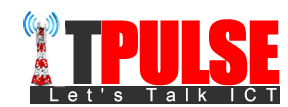Just this Wednesday, Google Photos announced it will stop offering free unlimited storage for high-quality photos on June 1, 2021. Photos uploaded after the date will be counted towards the 15GB Drive cap. If the account is inactive or exceeds the 15GB limitation for two years, Google may delete the photos after warning. Users will either need to pay for a recurring fee or look for an alternative if they run out of room.
As such change of policy projected to affect more than 1 billion users worldwide, many may start to wonder what they are ought to do with their existing or any other photos that are taken going forward. Several remedies are available in the market at the moment, such as shifting towards other cloud storage services that offer freemium models, or simply upgrading google storage plan. Though most of the tier-1 public cloud storage vendors such as OneDrive, Amazon Drive, Dropbox, or iCloud offer certain amount of free storage space, none of them exceeds Google’s whopping 15GB storage space, which means ultimately, it all comes down to upgrading public cloud storage plan regardless of the platforms.
For Google Drive, though it seems like there are several plans available for upgrade, but if we consider SSD based laptop like Macbook or smartphone’s base amount to be 256GB for most people nowadays, to store this amount of data on the cloud can cost you around USD 120 per year! The annually accumulated fee could be a considerable expense.
Other alternative options?
If managing photos on public cloud with recurring subscription fee is not preferred, another intuitive approach is to go back to storing photos on external hard drives. However, this approach never ceases to address the inconvenience of managing and centralizing photos and the risk of natural and physical damage. Moreover, external hard drives are vulnerable to other common data loss risks such as viruses and human error. Besides, it is quite troublesome and hectic to migrate all photos from public cloud to multiple external hard drives.
If both alternatives do not suffice to growing amount of pictures in the long run, an on-premise device or private cloud may be a solution. Network-Attached Storage (NAS), a device with terabytes of storage space connected to a more secured home or office network, offers users higher level data ownership, data protection and recovery features, and comprehensive public cloud level accessibility.
Let’s take a look at why the above mentioned give NAS an edge:
Data protection & recovery
Data loss often is due to human errors like accidental deletion, hardware failure, or ransomware attack. On top of it, countless celebrity photo leak or data loss incidents from different public cloud providers were reported over the years, making more people aware that the notion of public cloud services being completely safe and secure is just untrue.
NAS solution on the other hand is ideal because several NAS providers like Synology has a very complete backup applications ecosystem that helps users to deploy all around photo backup and data protection. By seamlessly integrating the backup solutions with a NAS device, users can achieve various photo protection strategies without being wary of photos being lost or damaged.
Low total cost of ownership
Let’s put things into perspective. If we use 2TB storage space as a benchmark, as mentioned earlier, if a user is determined to pay for a 2TB Google Drive storage space for USD 120 a year to save and maintain the integrity of his or her photo gallery, the total cost of ownership accumulated will grow to USD 600 in 5 years, and significantly and ultimately be a heavy burden for many people going forward.
NAS on the other hand only requires initial hardware cost. A 2-bay NAS device plus two 2TB NAS drives for RAID purpose still only add up to only around USD 450, which is significantly lower than using public cloud services in the long run. Not to mention that a NAS usually comes with 2 to 5 years of warranty. Thus, NAS is an obvious choice when it comes to economic value.
Comprehensive photo management appliance
Some NAS vendors even provide mobile apps and photo management appliance like Google Photos to not only help users to manage photo storage, share and access portfolios on the go, but also offer a modern browsing and uploading experiences for photos that users captured in daily life. To turn it up a notch, a handful of NAS device even has built in image recognition and deep learning algorithm that assists users to group photos according to similar topics and categories.
A scalable and efficient NAS storage device can be viewed as a once in for all photo management solution. Users no longer need to be wary of when the public cloud vendors are going to start charging for additional subscription fee so photos or data need to be migrate elsewhere, nor do users have to worry about photo management issues such as data loss, scattered photos, and the recurring fee that is more significant than it seems in the long run.
With all the benefits mentioned above, together with NAS vendors such as Synology have now designed their OS to be very intuitive and easy to use; just like operating a PC, it’s time to say goodbye to the free storage hoax and build your own cloud storage with a NAS!
This article was written by Joanne Weng, Senior Sales Manager at Synology Inc



